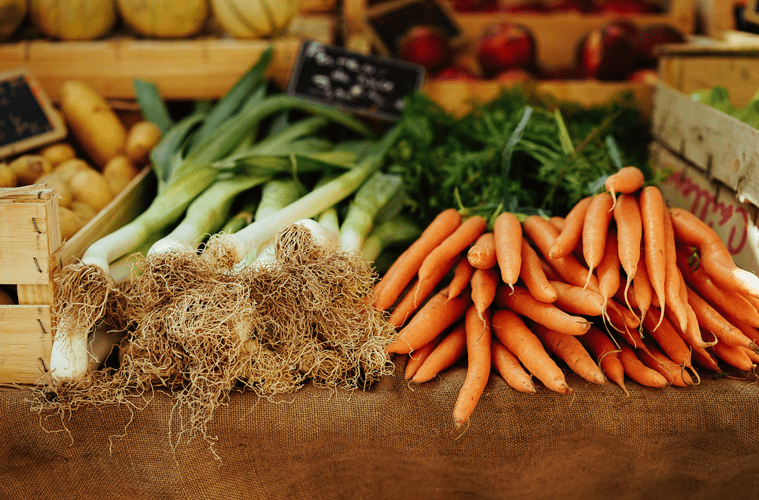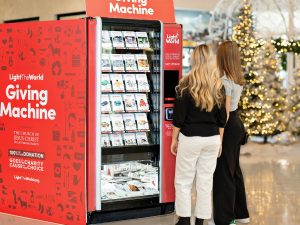It may be a matter of political will.
There’s a lot of work to be done to eradicate hunger once and for all, but that’s not deterring an overwhelming majority of Americans.
According to a 2018 survey by grassroots hunger defense organization WhyHunger, 89 percent of Americans think hunger is a solvable problem—and yet, they’re split on the root causes: 49 percent of respondents think a lack of access to healthy, affordable options is the root cause of hunger, while 43 percent of respondents attribute it to unfair wages, according to the report. Still others note that systemic racism (44 percent) is a major contributor.
The reality is that one in eight Americans don’t know where their next meal will come from, which means more than 41 million people are food insecure. They might be college students, children, working adults, or retired grandparents.
With food insecurity comes an increased risk for numerous health issues and higher healthcare costs, research shows. And while The Salvation Army has been at the forefront of working to solve hunger on the ground for more than 150 years, the latest solutions are designed to help search for an end to the crisis through sustainable change now.
“Food isn’t just about food”
One of the biggest misconceptions about what’s causing hunger in one of the world’s richest nations is also what leads many to misunderstand how to solve it, said Bryan Harrison, senior policy analyst for basic needs at The Salvation Army National Headquarters.
“A lot of people who aren’t in need tend to think that anyone that might need nutrition assistance is unemployed, but that isn’t the case,” he said. “There are millions of working adults that struggle to provide for themselves and their families. With that, what’s misunderstood about the ‘right’ solutions is the notion that just providing the food is all that is necessary.”
Harrison added that studies show work requirements for government food assistance programs like the Supplemental Nutrition Assistance Program (SNAP) do not lead to more people finding stable work and no longer needing assistance, but rather create undue reporting burdens and often lead to the loss of a much-needed social service support.
The “right” solution to The Salvation Army is helping to fill the gap in nutrition assistance, he said, while also looking at the root cause of the problem and working to address the issue at hand, whether it’s housing, job training, finding a job, or poverty overall.
“This is where a program like our Pathway of Hope initiative, which seeks to address the root causes of and break intergenerational poverty, comes into play,” Harrison said. “We want to help lift those in need up in their time of necessity, and then work to make sure they have the necessary tools and support to reach a level of stability where they will no longer need the supplemental assistance.”
Through Pathway of Hope, families can connect with both The Salvation Army and other services available to them in their local community, such as job training, health services, childcare and education, housing options and legal services.
Most importantly, the program is designed to focus on hope as a measured outcome—recognizing the distinct spiritual work The Salvation Army does in every zip code.
“Food isn’t just about food,” said Envoy John Stennett, Social Services Director for The Salvation Army Western Territory. “For example, through the food pantry, we learned this particular client had no blankets and not enough money to pay the gas bill.”
It’s the kind of issue a number of Americans struggle with all-too-often: whether or not to pay an important bill or to put food on the table, Stennett said. While unemployment rates have remained low, many working adults are working in jobs with low wages, no benefits and inconsistent hours, creating a hidden vulnerability for them and their families.
“There’s a general line of thought that if a person has a job, there’s no possible way they could be going hungry,” he said. “Everyone’s life is complicated in different ways, with many tough decisions that have to be made, especially for the millions of people that live paycheck to paycheck.”
Growing goodness
As income and housing remains unstable for some of the nation’s most vulnerable, there’s also been a concerted effort to break the cycle of inadequate or improper nutrition and its associated health problems.
Half of WhyHunger’s survey respondents noted that sustainable environmental practices have a strong impact on harvesting nutritious foods. For Executive Director Noreen Springstead, that’s an important perspective in the fight to solve hunger for good.
“We view this as a social justice and an environmental justice issue,” she said. “With movements such as agroecology and community gardening, it’s been proven that food systems can be regenerative for the earth and at the same time, transformative for bodies and souls.”
They’re also the kind of initiatives that can fill in the gaps and create hope for the future for advocates like Harrison. Throughout the country, various local Salvation Army service centers have invested in their own community gardens, urban farms, greenhouses, and even an indoor growing facility. Others are developing dietary-specific pantries where clients can choose the foods that best suit their family.
For example, the GrowGood 1.5-acre urban farm in Bell, California, is both a thriving social enterprise and a provider of fresh, organic produce to The Salvation Army Bell Shelter, helping it to serve more than 6,000 meals each week. Notably, though, the farm has taken it a step further.
GrowGood has been working with The Salvation Army to develop a garden-based program for the residents of the Bell Shelter that uses healthy food and gardening as a catalyst for healing from the inside out. The push for more sustainable, fresher foods has also impacted how local food pantries and markets serve those in need in their local communities. In the last few years, there’s been a shift from canned or shelf-stable foods to more requests for fresh produce and refrigerated items as the trend towards more healthy living has taken hold across the country.
In Salem, Oregon, for example, a small garden provides fresh greens for the food pantry.
In Boise, it means providing hot plates for those with inadequate kitchens.
In Baltimore, the first-ever Salvation Army nonprofit supermarket, DMG Foods, was created to provide thousands of area residents access to healthy food they wouldn’t otherwise have. DMG also offers nutritional guidance, shopping education, workforce development training, meal planning and recipes.
Meanwhile, in Glendale, California, an innovative client choice food pantry led by Lt. Jennifer Shiflett, Glendale Corps Officer, is part of a growing model that allows clients to “shop” food, while reducing waste.
“The response from clients has been huge,” she said. “Through the food pantry, the volunteers and staff learn about one another and make a connection.”
Clients can come by every 30 days to the market that’s open Monday through Friday. On Fridays, families who are part of the free after-school programs take home the leftovers. For some, it’s their first introduction to what The Salvation Army offers, which means a holistic approach and better case management can coincide with food delivery.
But Harrison said one of the biggest areas of opportunity is in nutrition education and culinary training: “We see food as a means to get out of poverty, with education playing a central role in that process.”
The Salvation Army is working to teach people about healthy choices and simple meals they can make. In some areas, chefs donate their time to provide classes, and in others, culinary arts training programs provide valuable job training and nutrition knowledge that can be used throughout students’ daily lives.
Indeed, those eager to learn are the ones who can help solve hunger now and in the future.
“You’d be amazed at what you learn and the relationships that develop,” Stennett said of working with clients in local pantries. “It’s immediate reinforcement through food, but it helps us stay connected to those communities, too.”
DO GOOD
– Find opportunities to get involved with The Salvation Army in solving hunger and give to support the effort in your local zip code.
– Find one day a month to volunteer at your local food bank or pantry. If you can spare a few hours during a weekday, even better.
– Help create or host a free, simple cooking or gardening class in partnership with a local grocer, food bank or shelter.
– Talk with friends and neighbors who serve the hungry in your community to learn more about specific dietary needs and food items (i.e. Kosher, gluten-free) that will be most needed during the next food drive.













I liked the photo (roots of onions, potatoes, carrots, etc.) used at the beginning of article to “get to the root” of hunger in America. Great visual aid with a lot of color to brighten up what could be a dismal subject. I have been “ brightly challenged” to do my part to help my neighbor!!!!!